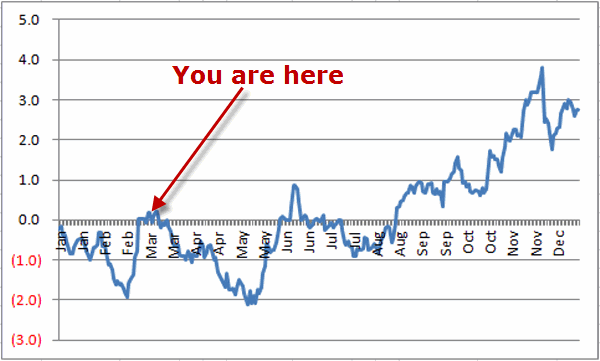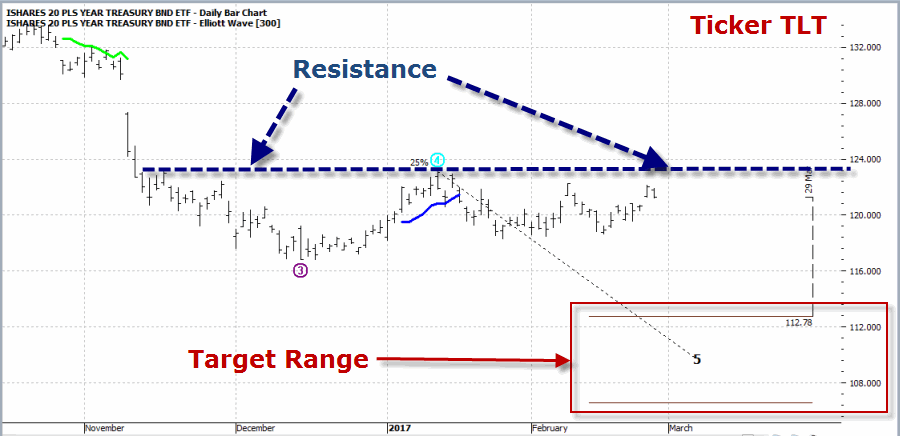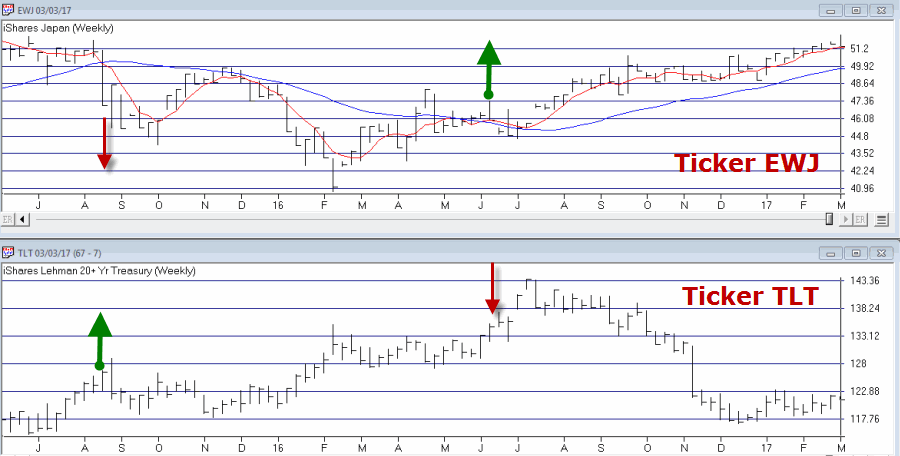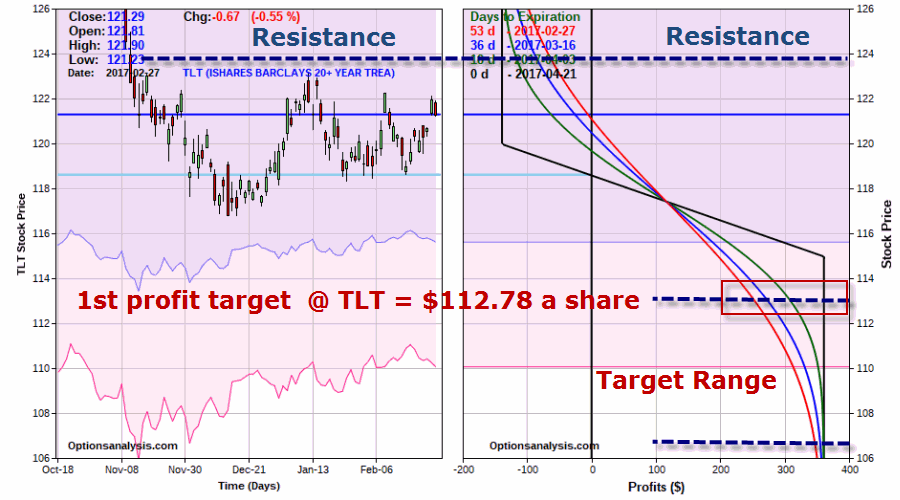Several potentially negative influences may weigh on bonds in the near-term. And then again they may not. Hence the reason the title of this piece is “Speculating in Bonds” and NOT “SELL BONDS NOW OH MY GOD!!!!!!!”
What we are talking about is a speculative trade that might make a few bucks if bonds do decline but won’t break the bank if bonds rally instead.
Two more important notes:
1) I am not “predicting” that bonds are about to decline. I will simply be highlighting several factors that suggest they might
2) I am not “recommending” the example trade that follows below. It is presented simply as an “example” of one low dollar risk way to bet on lower bond prices
Potential Negative Influences
#1. Seasonality
Figure 1 displays the annual seasonal pattern for t-bond futures. As you can see we are at the start of a period which typically (though not always) experiences weakness. Figure 1 – Annual Seasonal Trend for T-Bonds
Figure 1 – Annual Seasonal Trend for T-Bonds
Just remember that the chart in Figure 1 displays “tendencies” and not a roadmap that bonds follow year in and year out/
#2. Elliott Wave
As you can see in Figure 2 the daily Elliott Wave pattern (as calculated by ProfitSource by HUBB) is projecting lower prices for t-bonds. Figure 2 – Ticker TLT with Daily Elliott Wave count (Courtesy ProfitSource by HUBB)
Figure 2 – Ticker TLT with Daily Elliott Wave count (Courtesy ProfitSource by HUBB)
For the record, Elliott Wave counts don’t always pan out. But for now it still counts as a negative influence (at least in my market addled mind)
#3. Price Trend is still Negative
Figure 3 displays the weekly chart of ticker EWJ (Japan ETF) and a weekly chart of TLT. TLT tends to perform poorly when the 5-week moving average for EWJ is above the 30-week moving average for EWJ – which has been the case since June of 2016 and remains the case today. Figure 3 – Ticker EWJ in an uptrend (which tends to accompany t-bonds downtrend)(Courtesy AIQ TradingExpert)
Figure 3 – Ticker EWJ in an uptrend (which tends to accompany t-bonds downtrend)(Courtesy AIQ TradingExpert)
Hypothetical Example Trade
The position displayed in Figures 4 and 5 is referred to as a “bear put spread” and involves:
*Buying 1 Apr2017 TLT 120 Put
*Selling 1 Apr2017 TLT 115 Put
 Figure 4 – TLT April 120/15 bear put spread (Courtesy www.OptionsAnalysis.com)
Figure 4 – TLT April 120/15 bear put spread (Courtesy www.OptionsAnalysis.com)
 Figure 5 – Risk curves for – TLT April 120/15 bear put spread (Courtesy www.OptionsAnalysis.com)
Figure 5 – Risk curves for – TLT April 120/15 bear put spread (Courtesy www.OptionsAnalysis.com)
A 1-lot costs $139, which represents the maximum risk on the trade. The maximum profit potential is $361. From a trading perspective here is the more relevant way to look at this position:
1) If the “resistance” level is taken out, this trade will lose somewhere between -$60 and -$139, depending on how soon it happens
2) If TLT does decline to the upper Elliott Wave target of $112.78, this trade will show a profit of +$258 and +$363, again depending on how soon that price level is hit.
So the relevant questions for a trader in this hypothetical example are:
1) Do you think there is a chance that t-bond prices will decline between now and April 21st?
2) Do you have $139 bucks you are willing to risk in order to find out?
Here is another “real world” way to look at this hypothetical position:
The Good News is that it appears to have a lot going for it in terms of bearish catalysts / influences, a positive risk to reward ratio and a low dollar risk
The Bad News is that all bonds have to do is rally a little bit and the whole darn thing ends up looking pretty darn stupid in hindsight.
Hence the reason it is called “speculation” and hence the reason for risking a low dollar amount.
Summary
Is this any way to trade t-bonds? Well, it’s one way. Nothing more, nothing less. A simple example of one way to speculate on lower bond prices without betting the ranch.
Jay Kaeppel
Disclaimer: The data presented herein were obtained from various third-party sources. While I believe the data to be reliable, no representation is made as to, and no responsibility, warranty or liability is accepted for the accuracy or completeness of such information. The information, opinions and ideas expressed herein are for informational and educational purposes only and do not constitute and should not be construed as investment advice, an advertisement or offering of investment advisory services, or an offer to sell or a solicitation to buy any security.

